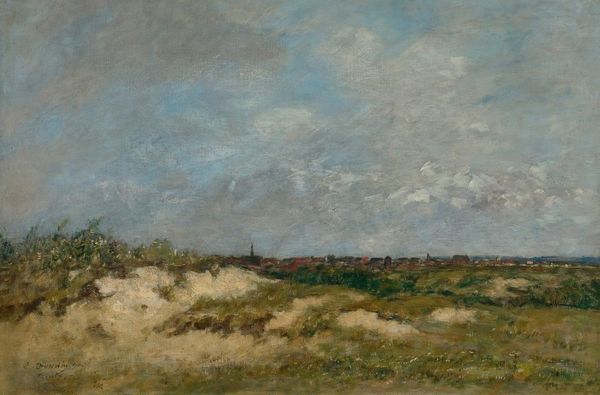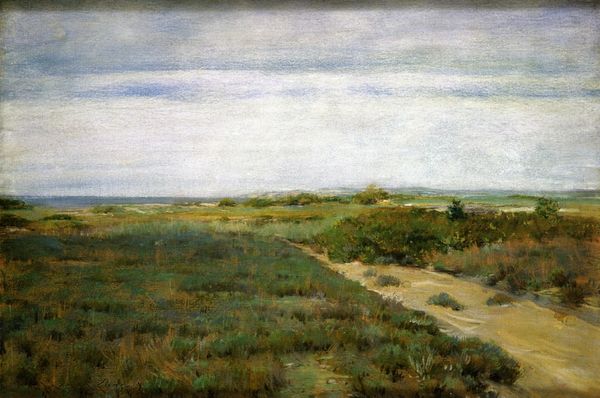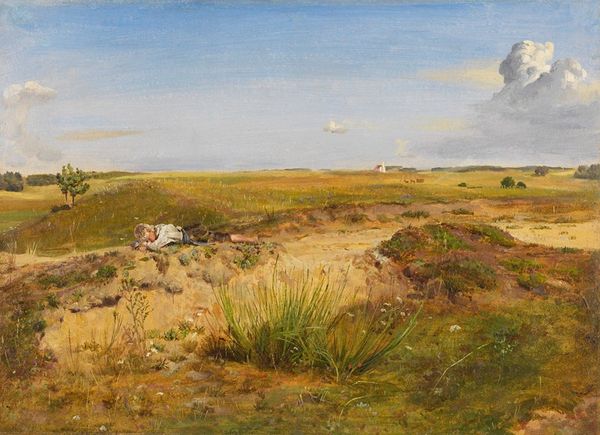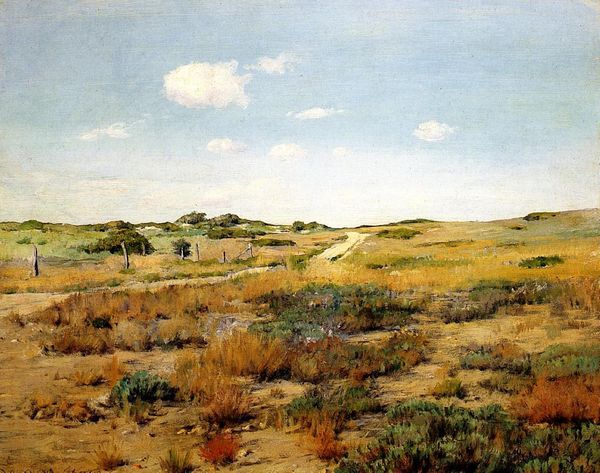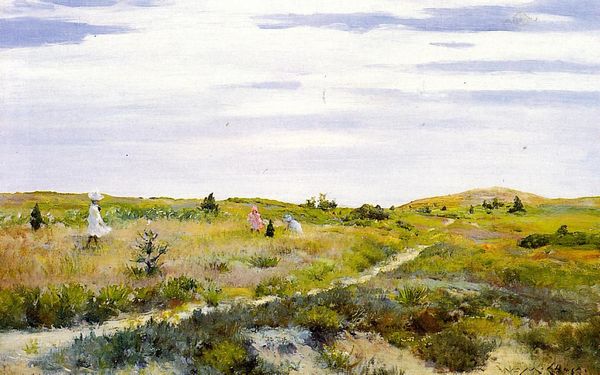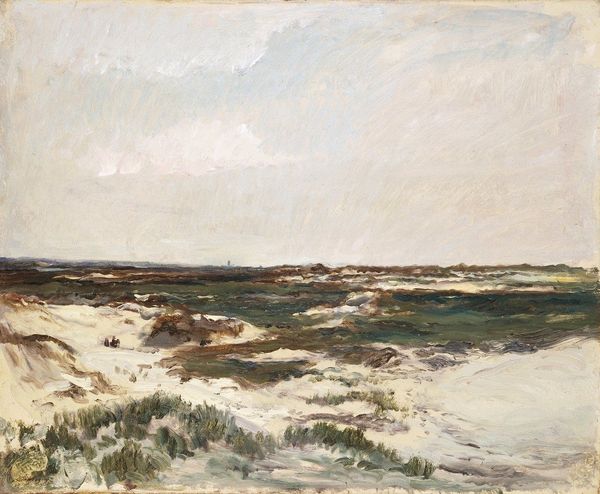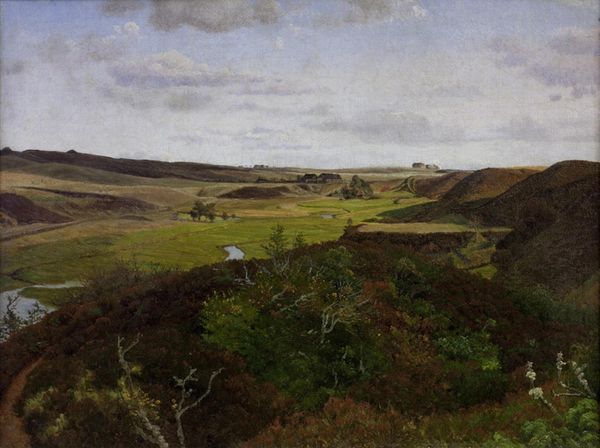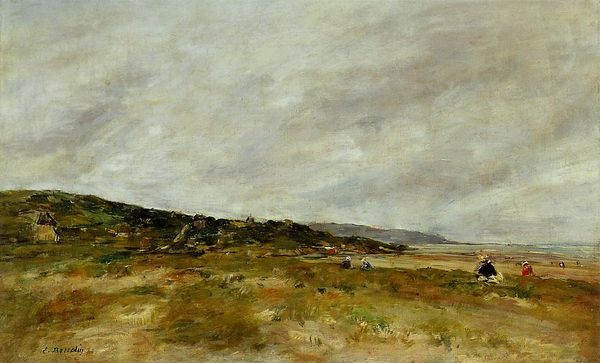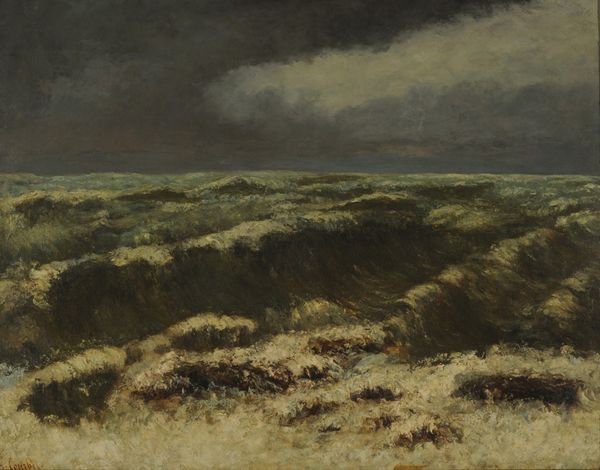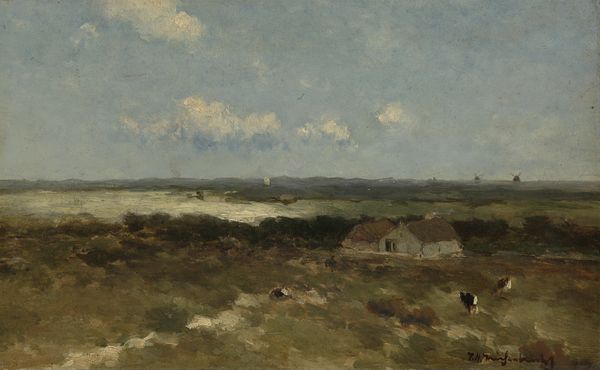
Dimensions: support: 301 x 401 mm frame: 556 x 672 x 90 mm
Copyright: CC-BY-NC-ND 4.0 DEED, Photo: Tate
Editor: Here we have William Davis's "A Day's Sport at Bidston Hill," housed at the Tate. There’s a stillness to the landscape, but also a tension with the hunter present. What strikes you about this work? Curator: This painting, while seemingly pastoral, invites us to consider class and land ownership. The "sport" suggests leisure afforded to some, while the land itself likely held different significance for others. Who historically had access to this land and for what purposes? Editor: That's a great point! I hadn't thought about it in terms of access and privilege. Curator: Davis might be subtly commenting on Victorian society's relationship with nature and leisure. Exploring these dynamics adds layers of meaning to what initially appears a simple landscape. Food for thought, isn't it? Editor: Absolutely. I'll never look at a landscape the same way again!
Comments
tate 8 months ago
⋮
http://www.tate.org.uk/art/artworks/davis-a-days-sport-at-bidston-hill-t04170
Join the conversation
Join millions of artists and users on Artera today and experience the ultimate creative platform.
tate 8 months ago
⋮
Born in Dublin, Davis came to England by 1837. He probably settled in Liverpool in the early 1840s, when he first exhibited at the Liverpool Academy. He began painting small-scale landscapes around 1853 and soon came under the influence of the Pre-Raphaelites, who were regular exhibitors at the Liverpool Academy. They (Rossetti and Ford Madox Brown in particular) in turn became great admirers of Davis's work. The landscape of Bidston Hill and Bidston Common, now part of Birkenhead, was a popular subject with Davis and other Liverpool Pre-Raphaelites, who appear to have valued it for its un-picturesque, down-to-earth character. Gallery label, September 2004
